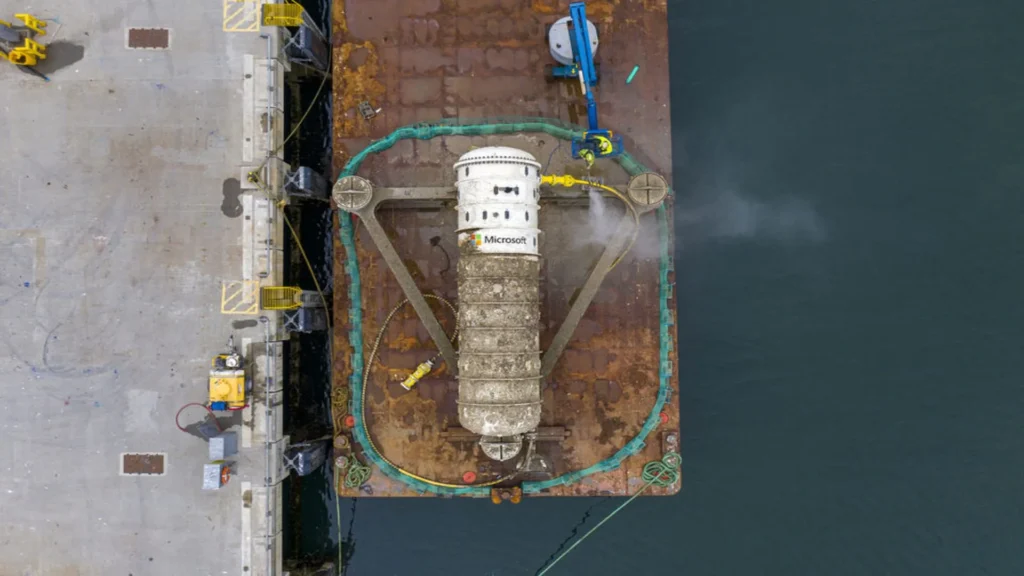Microsoft has announced the completion of its groundbreaking Project Natick, an experiment that involved the installation of a underwater data center . Although they do not plan to build more subsea centers, the results obtained have been positive and the company will apply the knowledge gained in other data centers on land.
This project, initiated in 2013, consisted of installing a data center on the seabed near the Orkney Islands in Scotland. The facility, which included 864 servers, was operated using renewable energy. renewable energy such as solar, wind and tidal. It began operating in 2018 with the aim of meeting the growing demand for data centers close to urban areas and promoting the use of clean energy.
Microsoft alliance with Naval Group for subsea data center
To carry out this project, Microsoft collaborated with Naval Group, a company specialized in naval and underwater engineering. Together they developed a sealed infrastructure approximately 12.19 meters long, which contained the servers and a cooling system similar to that used in submarines, where seawater circulated through the servers’ radiators before being returned to the ocean.
Two years later, in 2020, Microsoft brought the data center above ground to evaluate its performance. They found that one-eighth of the servers had failed compared to a ground-based data center using the same components. Six servers out of 864 failed at the underwater center, while eight servers failed at the land center during the same period of time.

Disclosure of the results of the Natick Project. Source: Microsoft.
Natick Project Results
Microsoft found that subsea data centers require less maintenance and consume fewer resources thanks to the use of renewable energy . However, in a recent statement, Noelle Walsh, head of Microsoft’s Cloud Operations and Innovation division, confirmed that, despite the success, no more subsea data centers will be built in the future. However, the learnings from this experiment will apply to terrestrial data centers.
One of the factors that contributed to the success of the project was the consistency of the external temperatures under the sea, which facilitated the cooling of the servers. Another key aspect was the use of inert nitrogen gas within the infrastructure, instead of reactive oxygen, which improved operation and maintenance.

Going forward, Microsoft will continue to explore new ideas based on Project Natick to improve data center reliability and sustainability. to improve the reliability and sustainability of data centers. They are learning from other industries, such as robotics, to innovate in heavy server transport and other automation.
Follow us on social networks and don’t miss any of our publications!
YouTube LinkedIn Facebook Instagram X
Source and photo: infobae

